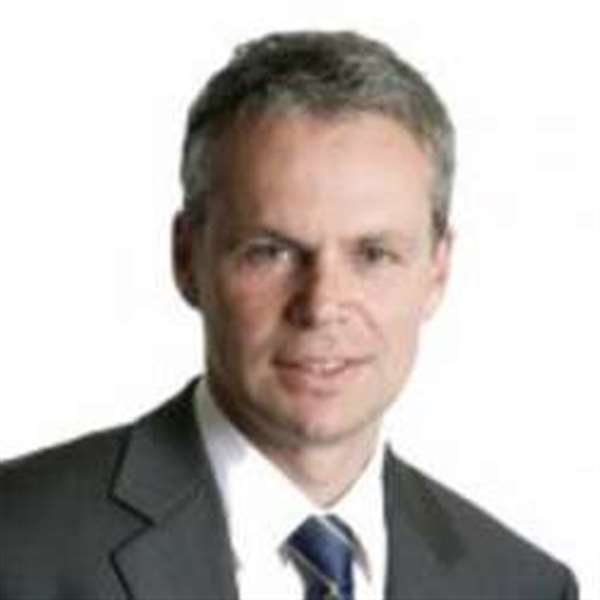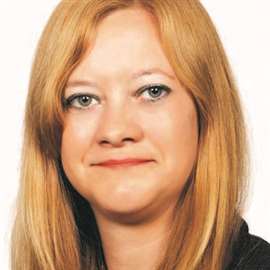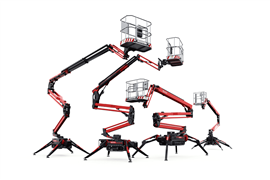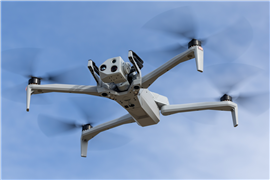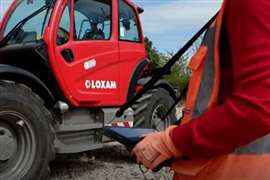Read this article in French German Italian Portuguese Spanish
Interview: Pramac Generac’s Alessandro Rossi on BESS capacity
22 February 2024
Alessandro Rossi, managing director of Generac Mobile Products, talks IRN through the synergy between Pramac and Generac, regional trends for BESS and the prospects for hydrogen-powered systems.
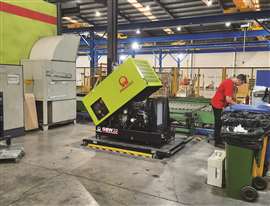 Generac in the US acquired Pramac America in 2014, with Generac president and CEO Aaron Jagdfeld describing the companies as “the perfect fit.”
Generac in the US acquired Pramac America in 2014, with Generac president and CEO Aaron Jagdfeld describing the companies as “the perfect fit.”
You would hard pressed to find a company better placed to discuss the challenges and opportunities in Europe within Stage V-powered gensets and Battery Energy Storage Systems (BESS) than Pramac Generac.
The synergy between the companies started in 2014, when Generac in the US acquired Pramac America. A full acquisition of the Pramac brand was to ensue in 2016, with Generac president and CEO Aaron Jagdfeld describing the companies as “the perfect fit.”
In Europe, the lighting tower range is Generac Mobile branded and manufactured in Italy, while the generators are Pramac branded and made in Spain and Italy.
Additional generator manufacturing plants are placed in Mexico, Brazil, India and China, while China also hosts manufacturing facilities for lighting towers.
The Group also has branches across Europe, North America, South America, Australasia and the Middle East.
“In Europe, the branches operate directly into the market with the lighting tower brand (Generac) and the BESS and generators brand (Pramac),” Rossi says.
“Outside Europe, both Pramac and Generac already had several importers in the past and we wanted to maintain our agreements with them, so we gave them access to a broader portfolio of products, while letting each of them continue to represent one brand.”
Expanding BESS production
All BESS are manufactured at its Rugby site, which it inherited through the acquisition of Off Grid Energy in 2021, a UK-based designer and manufacturer of battery energy storage systems.
Capacities range from 25kWh to 150kWh, which is a new addition to the offering. There will also be a 300kWh in a container solution available later in 2024.
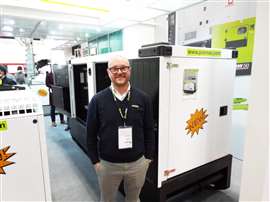 Alessandro Rossi, managing director of Generac Mobile Products
Alessandro Rossi, managing director of Generac Mobile Products
When asked what the maximum capacity is for mobile systems and whether the company is planning to continue increasing it, Rossi, who has been with the company since 1998, says a lot depends on unit storage.
“In terms of off-grid mobile, around 400kWh is the maximum size. After that, the weight makes the problem unmanageable for logistics.
“It depends on how many batteries we can store in the container, but let’s say that a suitable mobile solution stays in the range between 300 and 400kWh.
“Going bigger means more cooling systems, more energy and then you also have to recharge because you have to keep in mind that the battery storage needs to be recharged. If you go big as we have on the C&I Storage division, you need to have the system connected to the grid or connected to large solar power plants.”
On the question of expansion of its BESS facilities as the units become more popular in the rental space, Rossi says the company is looking at adding BESS production sites and isn’t ruling out the possibility of manufacturing outside of Europe in the future, although he admits in some areas the numbers aren’t justifiable yet.
“International markets travel at different speeds, especially in this field, so industrialization goes hand in hand with the needs that arise over time,” he says.
He adds that any new facilities would enable the company to “implement production in other markets when they develop a green vision.”
BESS adoption depends on the region
As for its customers, how are they engaging with both generators and BESS? When asked do they buy a certain amount of BESS alongside generators, Rossi says it depends on geographical location, with more mature markets like the UK further down the road in their adoption.
“Even in Europe, BESS markets have different speeds. Currently, the most receptive market is the UK, where we know that top rental companies offer a combination of Stage V and battery storage to the end user,” he says.
Although Rossi does admit that in other European countries, the market is not yet “sufficiently receptive,” often due to a “lack of precise regulations forcing the market to move in a certain direction.”
He says, “If you go to the southern part of Europe, it’s more difficult to rent a BESS because a culture of environmental sustainability is still at the beginning, and the end customer doesn’t want to incur additional costs.
“There are no rules that are forcing them to do that. This is also the discussion with Stage V. We have customers that are postponing their decision to invest in large quantities of Stage V and are refurbishing their old Stage 3A because the price per kilo of Stage V is not affordable for the end user.
“We see two Europe’s, one that is interested to explore and is investing, and another one that is waiting.”
However, he says that the market in Australia is more receptive to BESS, adding that the company is seeing more companies adding them to their rental fleet.
“They are starting to use battery storage and adding it to their rental fleet. Europe, North America and Australia are markets that are moving at a different speed, but other markets will come,” Rossi says.
Stage V barriers
Geographical proximity is also an issue for Stage V, he says, with some regions under less pressure to invest in the sets, which has been a requirement in some countries since 2020.
In areas such as the UK where regulation is prompting action, rental companies and end users are both reacting to legislation, but that’s not the case everywhere.
Rossi says, “Where we don’t have this kind of restriction and control, they try not to invest in Stage V until they have an old fleet, at which point they will be forced to move.”
He adds that complexity and maintenance of Stage V machines are also barriers.
“Stage V is not easy for us as a producer because it is a machine with more complexity. It’s not easy for the rental company because the machine needs to be inspected and controlled more carefully than the Stage 3A machine.
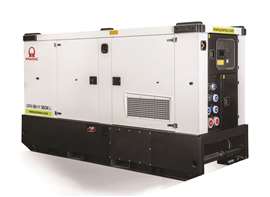 Pramac’s GRW 60 Hz Hybrid is described as an efficient, reliable unit that reduces operational expenditure. (Photo: Pramac)
Pramac’s GRW 60 Hz Hybrid is described as an efficient, reliable unit that reduces operational expenditure. (Photo: Pramac)
“There is the complexity of the after-treatment system, so the maintenance level needs to be much more accurate than before. Also, the end user has to manage the AdBlue, something that they didn’t have to manage before.”
Rossi continues, “Rental companies were using a Stage 3A and they could export it to other countries after five to seven years. Now the product has to stay in Europe. It’s not a problem they’re facing now because the Stage V is new, but when they have to manage the second life it will be a problem until markets outside Europe adopt Stage V.
“To mitigate the impact of Stage V, we are the first and currently only company to offer a hybrid generator, the GRW Hybrid. The advantage of this solution is that the user can use a 60kVA generator set without the need for AdBlue combined with a 24 or 48 kWh battery integrated into the same unit. This solution is ideal for low load management with the battery working alone, and peak saving with the battery and generator working together.
“Potentially, a single model can cover a range from 10 to 100kVA, a true innovation that could change the way a generator is used forever.”
Hydrogen adoption faces challenges
The conversation quickly turns to power options for generators, with LPG and diesel both discussed. However, the elephant in the room is hydrogen. Perhaps going against the grain, Rossi is certain that hydrogen power could be the future but is less certain as to when that might be.
“We will see very soon because, for example, a top rental company in the UK recently invested in a joint venture with a manufacturer of fuel cell technologies and they will have a fleet of hydrogen generators,” he says. “They will work very well; we just have to see how easy it will be for the user to have accessibility to hydrogen.
“A hydrogen generator as a technology is not far away potentially. Everybody talks about hydrogen, but we are lacking an availability network for distributing hydrogen. We can give you a hydrogen generator, but how do you use it is the biggest question mark of the customer,” Rossi says.
“We see hydrogen as the real alternative to diesel, but it is the network, infrastructure and the availability of hydrogen to the construction site that is the missing point of discussion. In the meantime, I think that BESS will be the bridge between the two technologies.”
Another point, he says, is that long-term BESS can be combined with hydrogen sets. For this reason, he predicts that BESS will remain, while hydrogen will eventually replace diesel sets.
Growth opportunities
As for the future of the company, Rossi says plans for acquisitions will be driven mainly by geographical expansion and new technologies. Given the historical activity of Generac in the M&A market, one can only assume that another Pramac could be in the pipeline, or “the perfect fit.”
Generac unveils new lighting towers and brand strategy
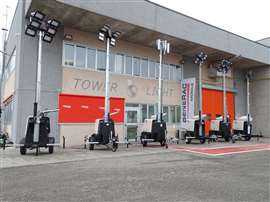 The GLT Series of lighting towers from Generac.
The GLT Series of lighting towers from Generac.
In January, Generac launched the GLT Series of lighting towers as part of a global brand strategy aimed at elevating brand awareness and enhancing product recognition.
The diesel models are made up of the GLT4-M and GLT4-A with four 320W G5 LED lights and 2-cylinder Stage V engine and the GLT6-M and GLT6-A with six 320W LED lights and 3-cylinder Stage V engine.
Generac said that the low power required for the LEDs enables the diesel-powered units to operate on smaller engines, reducing emissions in the process.
Both the GLT4-A and GLT6-A are fitted with a hydraulic mast, while the GLT4-M and GLT6-M come with manual masts.
The tanks for the diesel models have a 200-litre capacity and are made of plastic, greatly increasing the operational time of the units.
Rossi told IRN the strategic move involves offering the latest lighting tower models in a standardized design, providing customers with a unified global platform, while also allowing it to replace individual models from its existing product portfolio over time.
The GLT Series will eventually replace older models that have been in circulation for more than five years.
Meanwhile, Rossi revealed that the launch of its “second generation hybrid models” later this year will see production of the VT-Hybrid halt.
STAY CONNECTED



Receive the information you need when you need it through our world-leading magazines, newsletters and daily briefings.
CONNECT WITH THE TEAM
